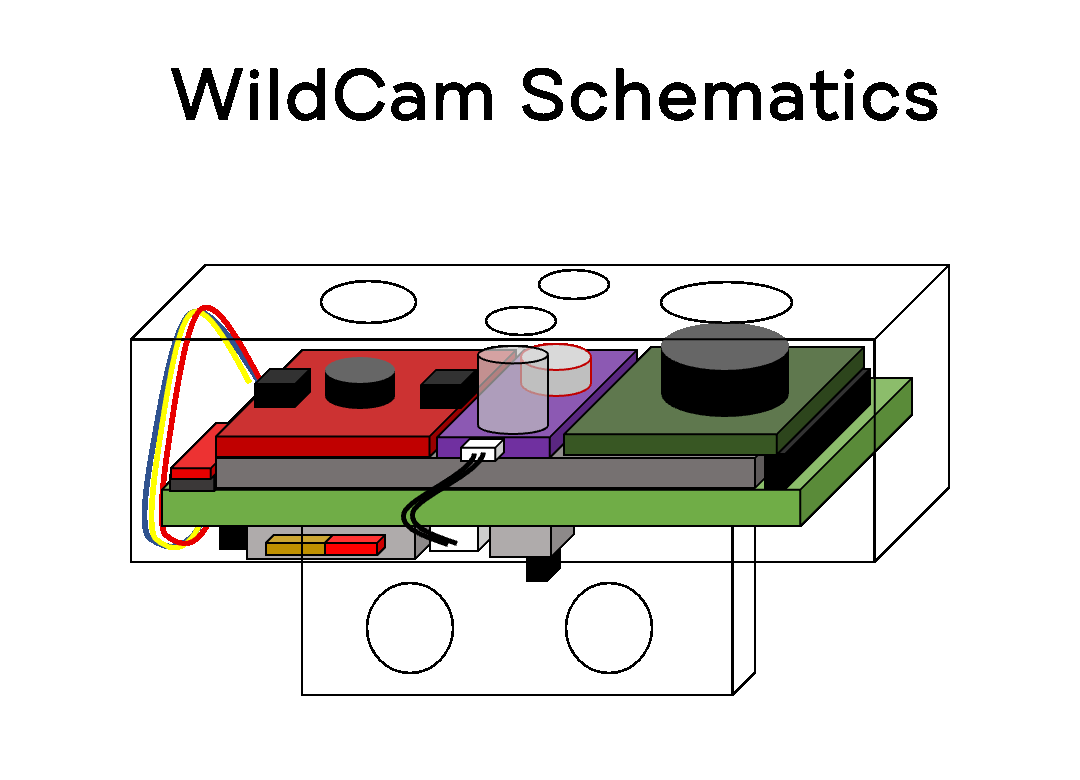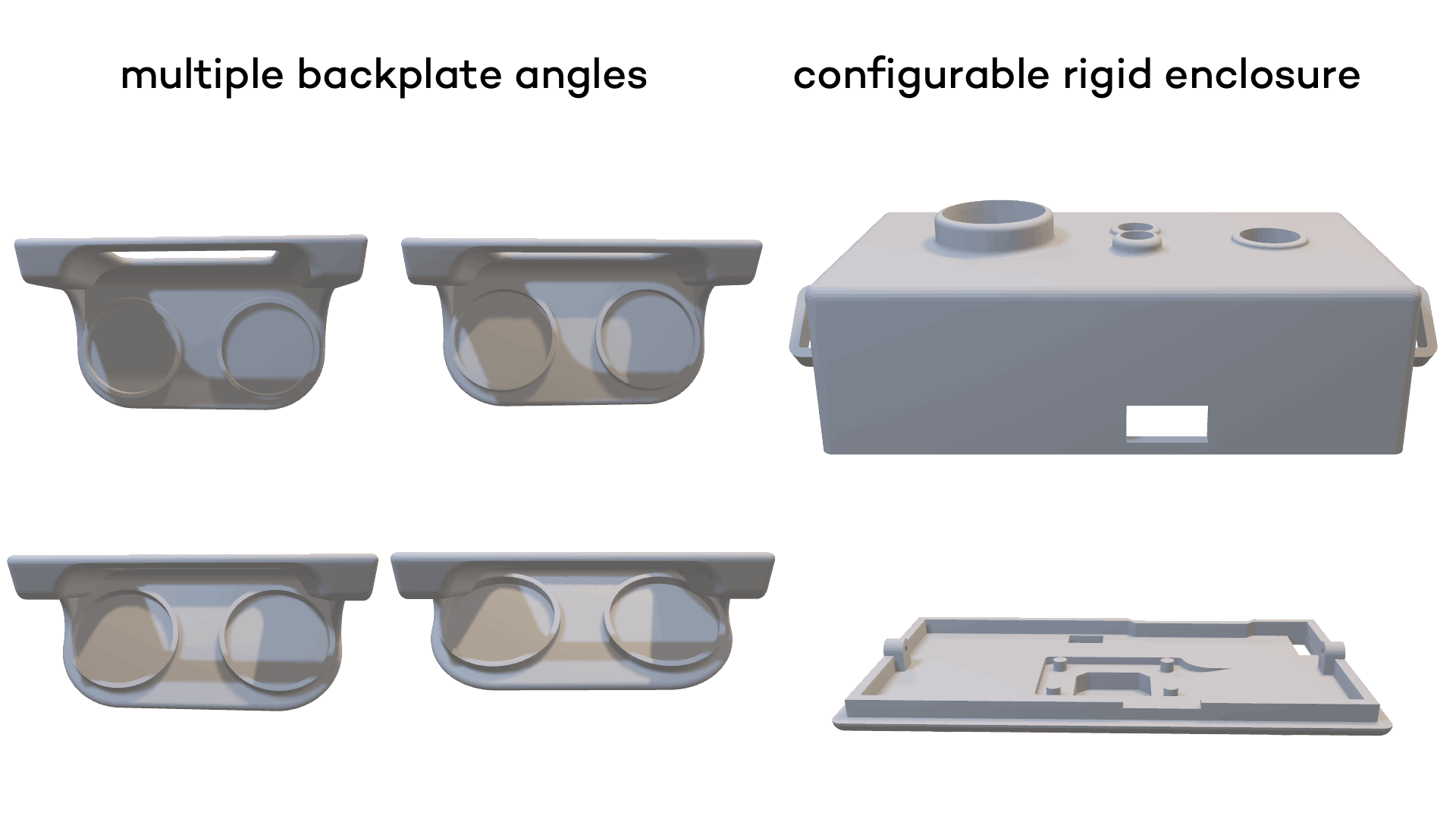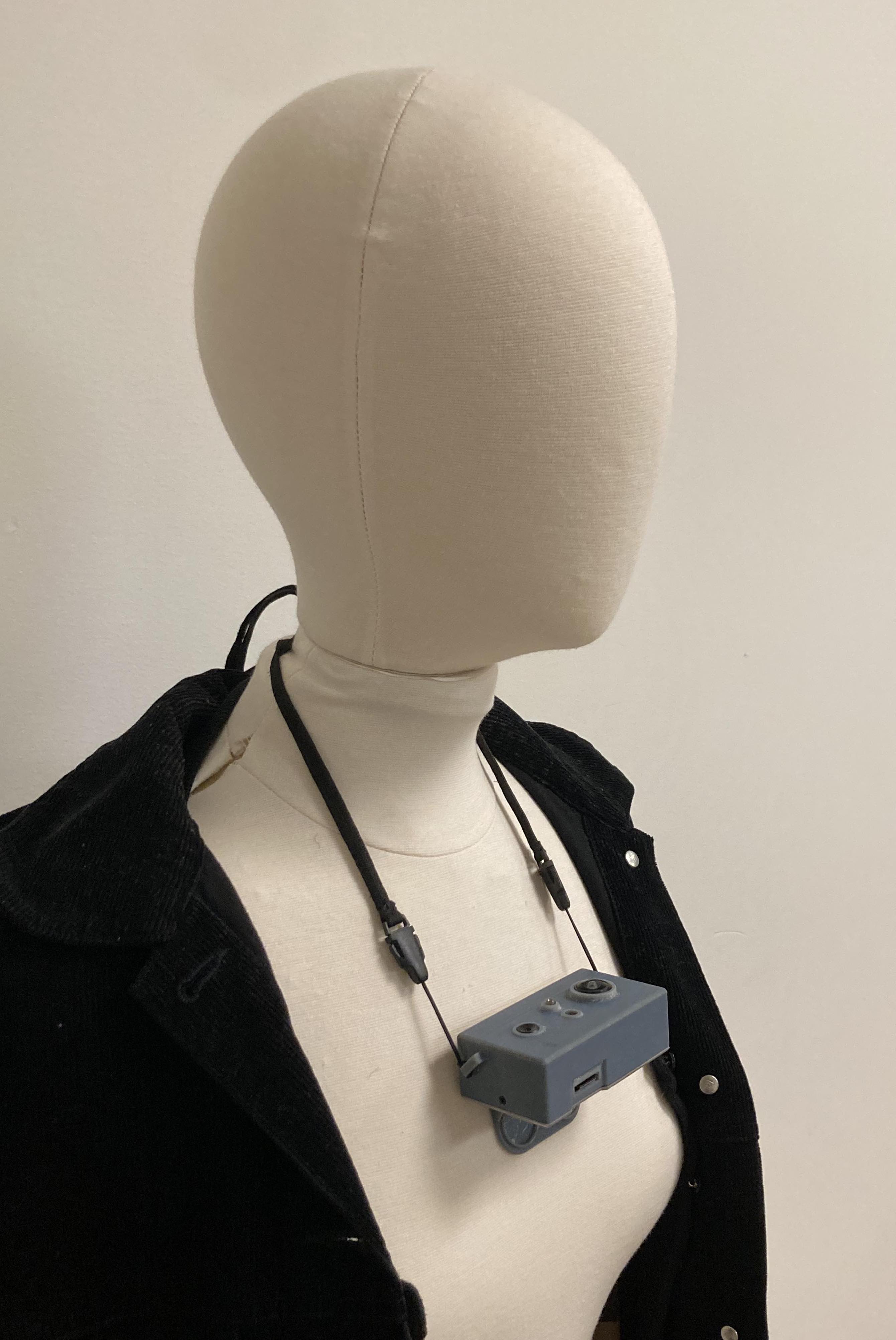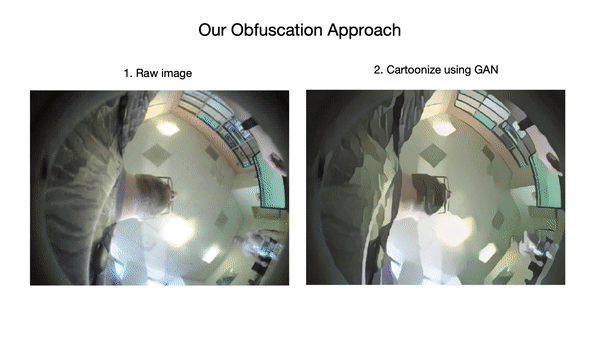The research, assessment, and treatment of unhealthy eating habits all rely on self reporting. That is, the patient or client must record their own dietary intake by using a food journal. This method of diet tracking has proven problematic, as much dietary information is lost due forgetting, non-adherence, dishonesty, and so forth. Because diet information is critical to the work of behavioral clinicians and researchers, a better method for diet monitoring is needed. In our project, “WildCam”, we aim to develop such a method via a wearable camera system, accounting for known user-experience issues associated with wearable cameras, including comfort, privacy concerns, and social stigma.
We develop “WildCam”, a wearable camera that sits on the chest and hosts an upward-facing sensor array that captures the user’s face and mouth area with both RGB and infrared thermal imaging.
 A master PCB (light green) houses the MCU, which controls the attached thermal (red), RGB (dark green), and night vision (purple) modules. Users power the device on and off via a switch (black and grey). When the device is on, input from the thermal and RGB sensors is written to the onboard SD card (red and gold) in an encrypted format.
A master PCB (light green) houses the MCU, which controls the attached thermal (red), RGB (dark green), and night vision (purple) modules. Users power the device on and off via a switch (black and grey). When the device is on, input from the thermal and RGB sensors is written to the onboard SD card (red and gold) in an encrypted format.

WildCam’s enclosure is a drop-safe 3D-printed casing made of a rigid filament. To account for different body shapes across the patient population, the backplate is removable and swappable with several other backplates of varying angles.

The device on a mannequin. The neckband is adjustable to correct for height differences between patients.
Wearable cameras raise obvious privacy concerns among users. Obfuscation—the automatic censoring of visual data that are not essential to the assessment of dietary behaviors—can protect patients from the unwanted capture of sensitive information, reducing privacy concern and increasing acceptability (AKA willingness to wear) of the device.
In this project, we test 4 different obfuscation techniques in a randomized clinical trial:
Examples:

We investigate the visual confirmation utility of obfuscated video frames. That is, we apply obfuscation to videos and then check whether the desired dietary information is still intact.
In particular, we want to compare the accuracy of human labels obtained from viewing non-obfuscated videos with the accuracy of the labels derived from viewing the obfuscated videos with different filters. Hand-to-head gestures can be confounding to each other if fine-grained and some contextual information is lost. Therefore, this comparison can help us to determine if the visual confirmation utility is preserved, or not, after applying activity-oriented partial obfuscation to it with different filters. It will also help us to understand the limitations of activity-oriented partial obfuscation and the filters applied.
Second, we explore patient attitudes towards each of the obfuscation techniques by presenting them daily clips of the data they have collected with obfuscation applied (or, in the raw condition, not applied). We assess patient attitudes both through directly surveying them and by comparing the mean daily wear time of patients using each obfuscation setting.
Our clinicial trial has concluded and we are now analyzing the data. A results paper is coming soon!


Have a question? let us now and we’ll get back to you ASAP!